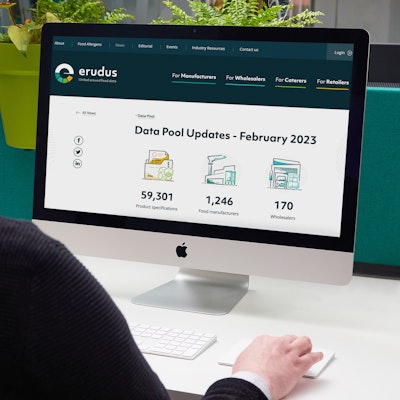What you need to know about the FSA and risk analysis process
With the Food Standards Agency (FSA) writing to the government to request that written allergen information be mandated in the non-prepacked sector, risk analysis is coming back into the spotlight (“Control of allergens” is one of the issues considered by the body in their risk analysis process). So with that in mind we thought it would be timely to put together this helpful cheat sheet when it comes to risk analysis process…
What is risk analysis?
The FSA describes risk analysis within their organisation as “how we ensure the UK maintains high standards of food and feed safety and protect consumers.”
What is the FSA’s risk analysis process
The risk analysis process is how the Food Standards Agency estimates risks to human health and finds ways to control these risks, using science and evidence - which they use to provide advice to government, business and consumers on food safety risks.
They also take the below factors into consideration:
- Animal welfare
- Control of pathogens (e.g. COVID-19, Listeria)
- Control of allergens
- Authorisation of chemical washes
- GM processes
The FSA describes their risk analysis process as world-leading in food safety regulation, and stress that it puts transparency, public understanding and trust at its heart.
You may also be interested in…


You may also be interested in…
The importance of using Microbiological fields
ReadAn example from the FSA
“During the coronavirus crisis, we carried out detailed risk assessments on the transmissibility of COVID-19 through food and provided advice to help business and consumers to do the right thing. When meat in prepacked sandwiches was linked to listeria infections in hospital patients in 2019, we used risk analysis to make risk management recommendations to the NHS Hospital Food Review panel to reduce the risk of vulnerable groups contracting listeriosis in the future. In 2015, we carried out risk analysis on runny eggs and updated our advice to state that vulnerable groups could now safely eat raw or lightly cooked UK hen eggs if they bear the British Lion mark.”
How the risk analysis process works
At a very top, basic level the risk analysis works like this:
- Once the risk analysis process is triggered, a risk assessment is carried out to estimate the risk to human and/or animal health.
- This assessment is done in consultation with external experts from the FSA's independent Scientific Advisory Committees and Joint Expert Groups.
- Risk managers then consider how best to control these risks. Alongside food safety, they take into consideration things like animal welfare, environment, economic impact and any nation-specific factors that are relevant.
- The risk manager’s advice can be used to inform ministerial decisions on changes to legislation, or help to change guidance from us on issues affecting businesses and consumers.
All advice that comes out of risk analysis is based on science and evidence, and is published alongside the evidence on which that advice is based.
Download the PDF on how the FSA have worked to protect your plate over the last 20 years and our vision for the future here.
Visit the FSA website here.
You may also be interested in…


You may also be interested in…
Food Safety Cheat Sheet: Chilling Foods Guidance
ReadYou may also be interested in…


You may also be interested in…





